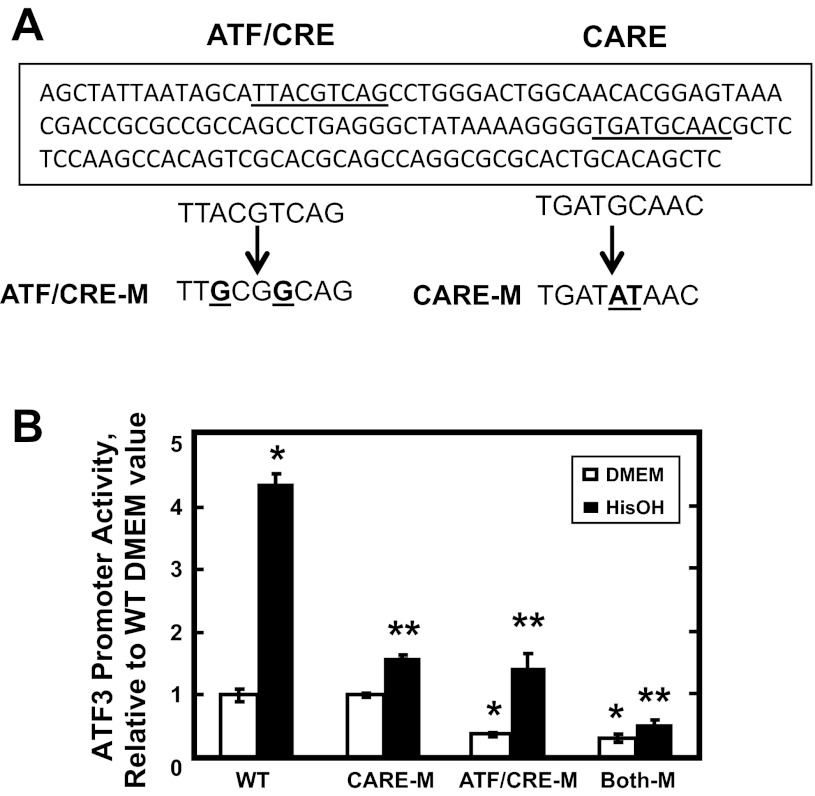Fig. 3.
Both the CARE and ATF/CRE sites contribute to ATF3 promoter activation during the AAR. A: the proximal promoter sequence of the ATF3 gene containing the ATF/CRE and CARE sites (underlined) is shown. The sequences for mutations of the ATF/CRE (CRE-M) or the CARE (CARE-M) sites are shown below the WT promoter sequence. B: HepG2 cells were transiently transfected with a Firefly luciferase reporter gene driven by a human WT ATF3 promoter fragment (nt −107/+35) or the same fragment containing the ATF/CRE-M and/or CARE-M mutations described in A. To activate the AAR, at 36 h posttransfection, the cells were incubated in DMEM ± HisOH for 15 h, and then luciferase activity was analyzed and normalized to protein content. The data are presented as the averages ± SD for a single experiment containing 3–4 replicates per condition, and each experiment was repeated with 2–3 independent batches of cells. *P value of ≤ 0.05 relative to the WT DMEM value, which was set to 1.0, and **P value of ≤ 0.05 relative to the WT HisOH-treated value.

